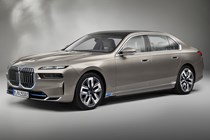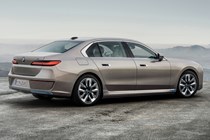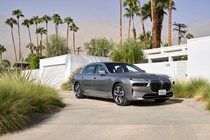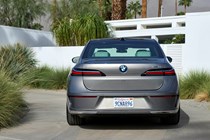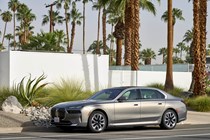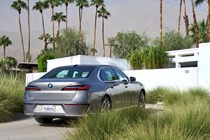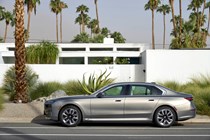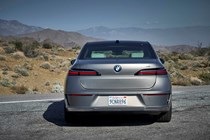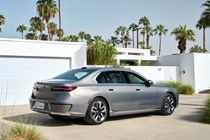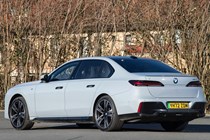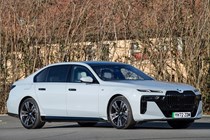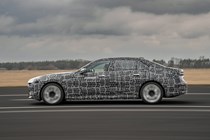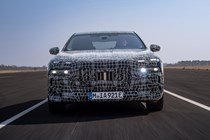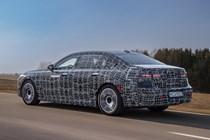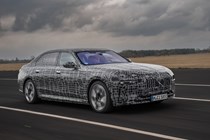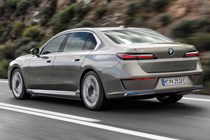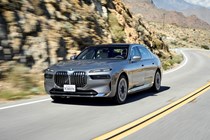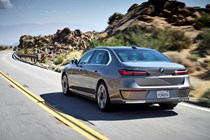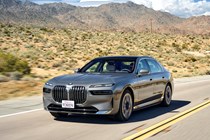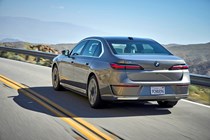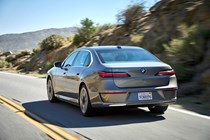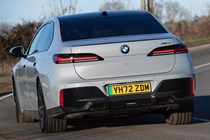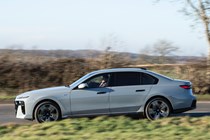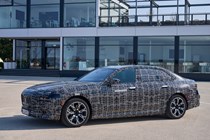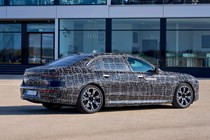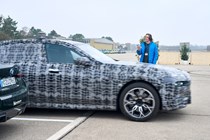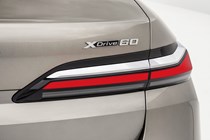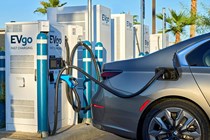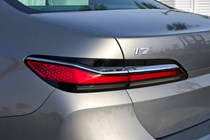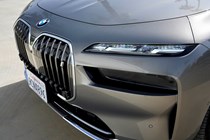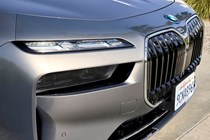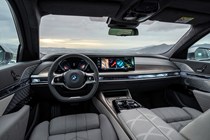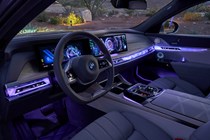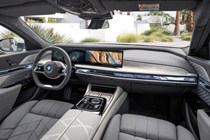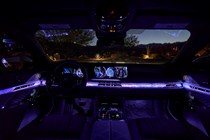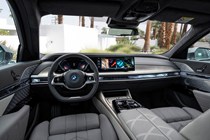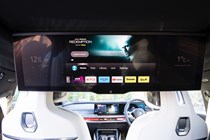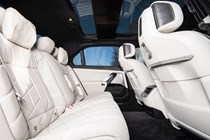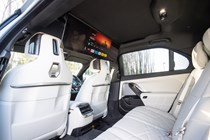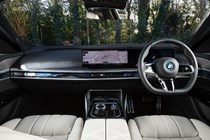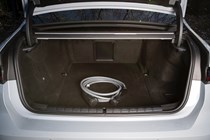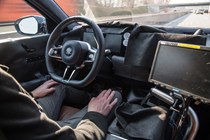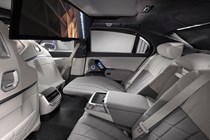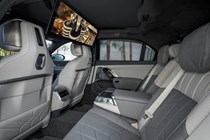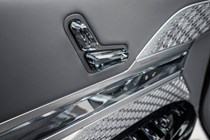
BMW i7 engines, drive and performance
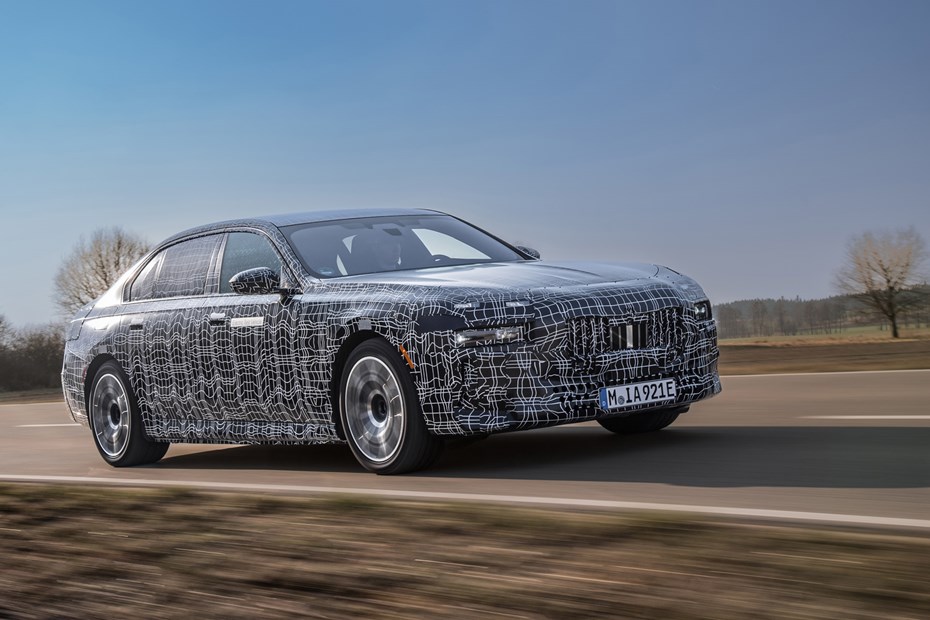
- Three motor options
- Impressive performance from all
- Handling impresses, Taycan more fun
Electric motor
There are currently three powertrain options for the i7. The range kicks off with the eDrive50 – as close to a ‘budget’ i7 as there’ll ever be, though it still costs more than £100,000. It uses a single motor with an output of 449bhp, operating only on the rear wheels. 0-62mph is dispatched in an impressive 5.5 seconds. We’ve not driven this model yet, but we’d prefer four-wheel drive in a car this big and heavy – and given that the next step up, the xDrive60, is not much more expensive in the great scheme of things, we’d recommend the upgrade.
The xDrive60 uses the same 101.7kWh battery to power two electric motors, one on the front axle and one on the rear, to give four-wheel drive. This allows it to seamlessly transfer 544hp and 745Nm of torque onto the road surface for a 0-62mph time of just 4.7 seconds and a top speed of 149mph – deeply impressive given the i7 is almost 5.4 metres long and weighs in at 2.7 tonnes.
At the top of the range sits the flagship xDrive M70. Breathed on by BMW’s M division, it has a bonkers 659hp and 1,015Nm of torque. 0-62mph thus takes just 3.7s and top speed is 155mph.
You’ll need to trigger launch control for that headline 0-62 time, but simply stamping on the accelerator from a standstill or on the move is unlikely to disappoint. As soon as the throttle pedal meets carpet the i7’s nose rises like a powerboat, and you surge seamlessly forwards. Should you wish for an extra shot of power, a paddle on the back of the steering operates a Boost mode that primes the car for a 10 seconds of maximum power – perfect for overtaking.
The i7 sits well next to its rivals in terms of raw performance, then. The M70 model is just a smidge quicker than the Mercedes-AMG EQS 53, with the smaller, sportier Taycan Turbo S beating both.
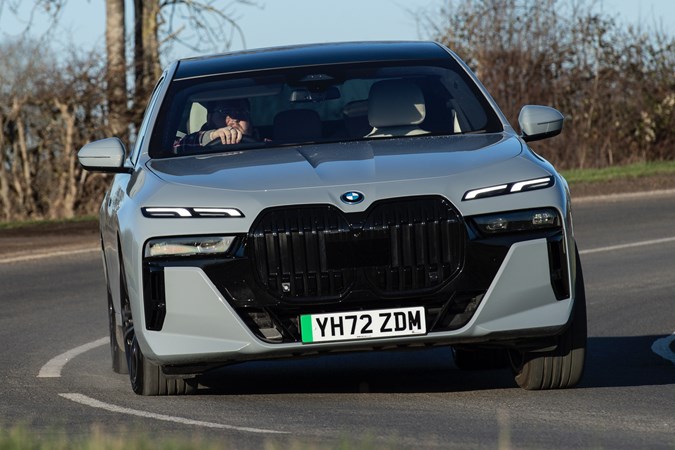
What’s it like to drive
Clearly the priority with the i7 driving experience is ultimate comfort and refinement for all passengers. In order to achieve this, BMW has used a complex air suspension setup with electronically controlled dampers as standard. You can even option a 48V active roll stabilisation system – as you’ll find in a Rolls Royce, a company BMW owns – that works to reduce body roll in corners, not only making the car more comfortable but increasing agility, too.
All of this, plus fabulous refinement, creates one of the most relaxing driving experiences this side of the aforementioned Rolls Royce. Even on bumpy, uneven tarmac the composure and quiet from the tyres and suspension components is deeply impressive and points to the level of engineering within the i7’s vast bodyshell.
Despite being more comfortable than a Mercedes EQS, the i7 also has far tighter body control. There’s enough slack to deal with crests and compressions comfortably without the uncomfortable float of the Merc, making the i7 a terrific long-distance cruiser.
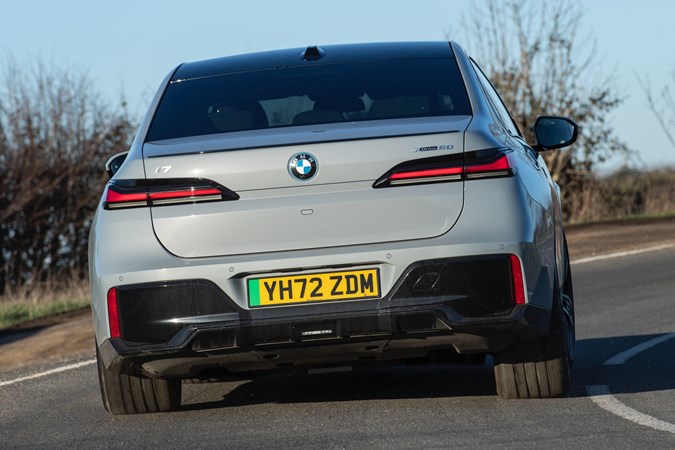
Beyond the expected comfort and performance from the electric powertrain, however, the i7’s ability to still feel relatively sharp and agile in the corners really stands out. Switch up the drive mode (or My Mode, as BMW now calls it) from Comfort into Sport and – while the ride barely suffers – the chassis gets usefully sharper, especially with all the clever chassis tech fitted. Yes, there’s still plenty of roll, but what do you expect from a big barge?
Opting for the M70 model doesn’t ruin the experience, either. It’s a tad sharper than the xDrive60, and with slightly firmer suspension – but if anything this improves comfort, as it doesn’t feel as floaty on the motorway.
Steering feel is respectable and the i7 displays ample sure-footedness even when driven with the kind of exuberance that most owners will never come close to subjecting it to. We reckon the petrol 7 Series handles a little better (no doubt down to the reduced weight), yet overall the i7 has far more dynamic capability than it realistically needs. Yes, the Porsche Taycan is in another league for fun, but then it’s a lot smaller and lighter.
We’ve no complaints regarding the i7’s brakes, either. Where the EQS and Taycan have a lot of pedal travel before they really start slowing down, the i7’s pedal inspires far more confidence. Not that you’ll need to use it a great deal – flick the i7’s gear selector from ‘D’ into ‘B’ and you’ll access a very good one-pedal driving mode.



